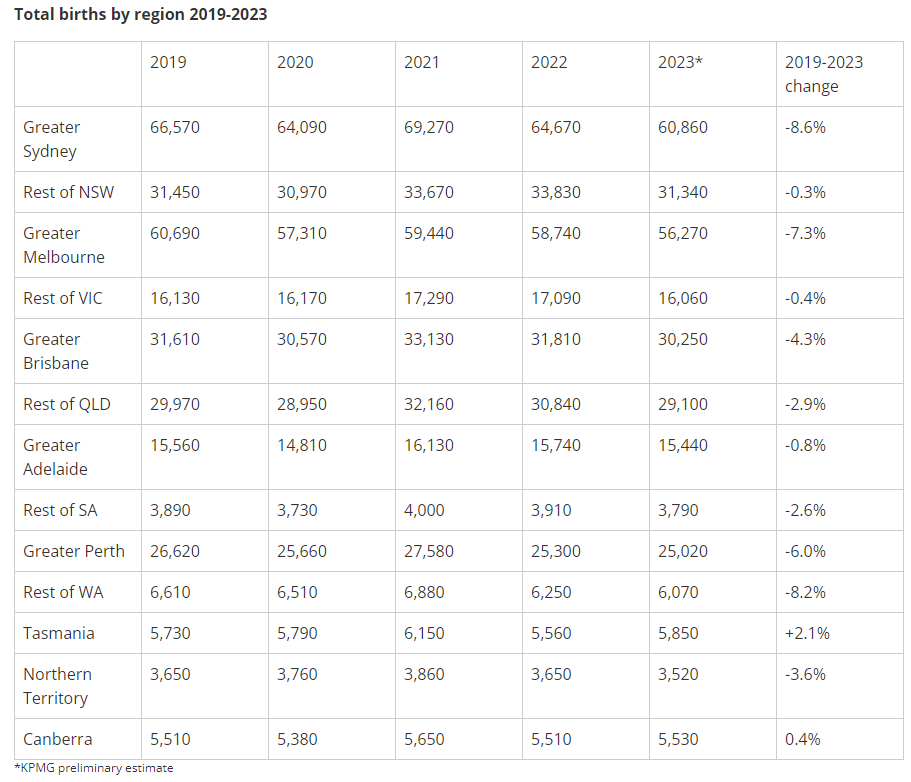Albo is the perfect prophylactic and Australia has stopped breeding. KPMG:
KPMG Australia analysis shows the country is in the midst of a baby recession as births across the country fall by 4.6 per cent year on year. The number of births in 2023 was the lowest since 2006 as cost-of-living pressures impact the feasibility of younger Australians to have children.
During 2023, 289,100 babies were born in Australia, a significant reduction from the 2021 post-lockdown spike which saw 315,200 babies born.
KPMG Urban Economist Terry Rawnsley explains that weak growth in the economy often leads to reduced birth rates, but that current cost-of-living pressures are having a particularly strong impact.
“Birth rates provide insight into long-term population growth as well as the current confidence of Australian families.”
“We haven’t seen such a sharp drop in births in Australia since the period of economic stagflation in the 1970s, which coincided with the initial widespread adoption of the contraceptive pill.”
Hellbourne is leading the way lower. Quite sensibly.
The most locked-down city has become the world’s angriest city, not to mention Australia’s poorest.
It is no place for children, unless they are upgrading marginally from the Third World:

We all know the answer: increase immigration to lift vibrancy and libido.

